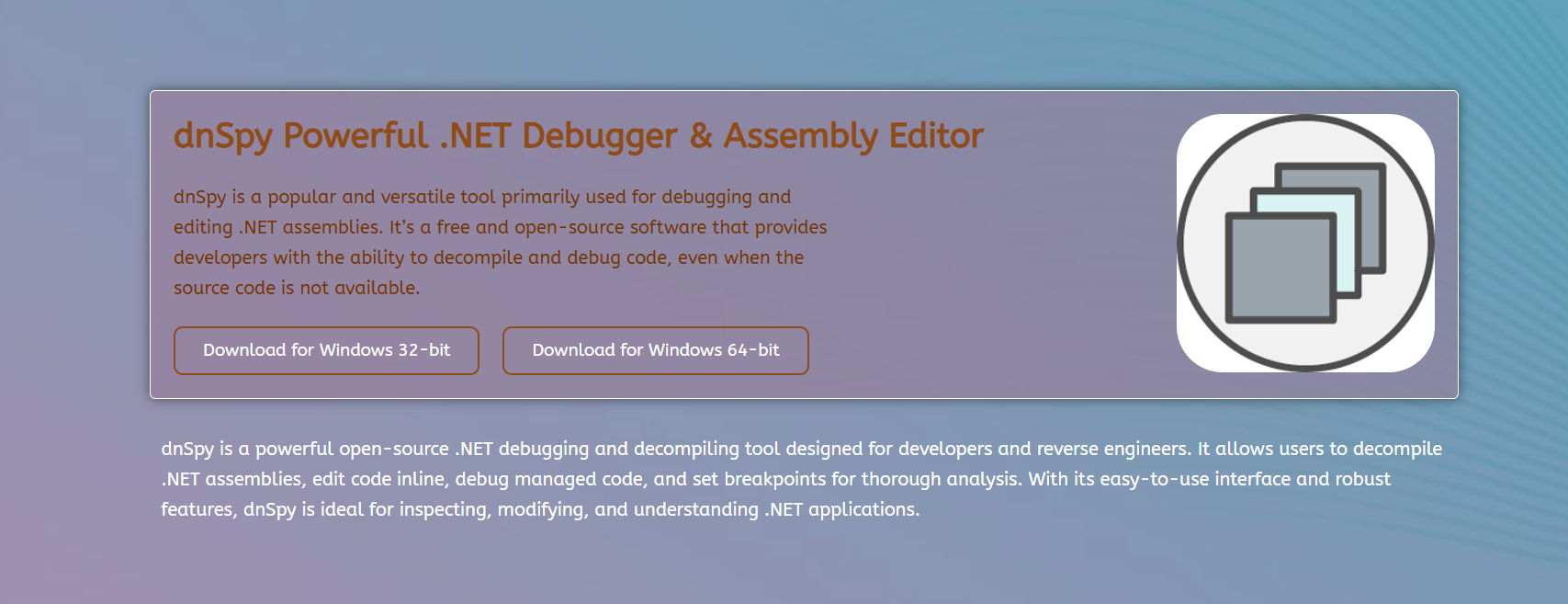Efficient debugging and decompilation tools are essential for developers working with .NET applications. Among these, dnSpy stands out as a versatile and powerful tool for inspecting, editing, and debugging .NET assemblies. With Windows 11 becoming the latest mainstream operating system, many users want to understand the best way to install dnSpy and ensure compatibility and smooth operation on this platform.
Windows 11 introduces enhanced security measures and updated system components that sometimes affect the installation and execution of third-party applications. It is crucial to adapt installation procedures to these changes to avoid potential issues. This article presents a detailed, step-by-step guide to installing dnSpy on Windows 11, covering all essential aspects from downloading the software to configuring it for optimal use.
Additionally, the article explains everyday post-installation tasks and tips to help users get started with dnSpy efficiently. Whether users are beginners or experienced developers, this comprehensive guide provides a hassle-free installation experience tailored to the nuances of Windows 11.
Downloading dnSpy
Accessing Official Sources
The first step in installing dnSpy is obtaining a legitimate copy of the software. Official releases are hosted on platforms like GitHub, where developers regularly publish stable builds and updates. Downloading dnSpy from official repositories ensures the authenticity of the software and minimizes security risks.
Selecting the Right Package
dnSpy offers multiple distribution formats. The most common are:
- Portable ZIP archive: This version requires no installation and runs directly after extraction. It is ideal for users who prefer not to modify system settings or want to use dnSpy on multiple devices via USB drives.
- Installer executable: This provides a traditional setup experience, including desktop shortcuts, Start menu entries, and optional file associations.
Verifying Download Integrity
After downloading, verifying the file integrity helps ensure the package is complete and untampered. Official releases often provide checksums such as SHA-256 hashes. Users can use built-in Windows tools or third-party utilities to calculate and compare these hashes against the official values.
This practice is a critical security step, particularly for users working with sensitive data or in corporate environments, as it guards against corrupted or compromised downloads.
Preparing Windows 11 for Installation
Understanding Windows 11 Security Features
Windows 11 incorporates several security features like Microsoft Defender SmartScreen, Controlled Folder Access, and User Account Control (UAC). While these improve system protection, they may interrupt or complicate software installation.
SmartScreen filters may flag dnSpy upon first launch if the tool is not yet widely recognized. Users should review these warnings and confirm the software’s trustworthiness based on official sources. Controlled Folder Access may restrict dnSpy’s ability to modify files, requiring adjustments in security settings to grant the necessary permissions.
Ensuring .NET Framework and Runtime Availability
dnSpy depends on Microsoft’s .NET Framework or .NET runtime components to function properly. Windows 11 typically comes with these pre-installed, but users should verify the presence of required versions through the system’s “Apps & Features” or “Optional Features” settings.
If missing, users can download the latest .NET Framework or runtime packages from Microsoft’s official website. Having the correct dependencies installed prevents runtime errors and guarantees full tool functionality.
Managing User Account Control (UAC) Permissions
Some dnSpy features, such as attaching to running processes or debugging certain assemblies, require administrative privileges. Users may need to run dnSpy as an administrator, which triggers UAC prompts.
Proper understanding and handling of UAC help maintain system security while enabling dnSpy’s full capabilities. Users should avoid disabling UAC entirely and instead grant permissions on a case-by-case basis.
Windows 11 preparation checklist:
- Confirm downloading from official GitHub or trusted sources
- Understand and navigate SmartScreen and Controlled Folder Access prompts
- Verify .NET Framework and runtime components are installed
- Know when and how to run dnSpy with elevated permissions
Installing dnSpy on Windows 11
Extracting the Portable Version
For the portable ZIP archive:
- Locate the downloaded ZIP file in the Downloads folder or designated path.
- Right-click and select “Extract All” or use tools like 7-Zip to extract the contents.
- Choose a folder outside of system-protected directories, such as C:\Tools\dnSpy or a dedicated development folder. Avoid paths like Program F,iles which may restrict file access.
- Complete extraction, which typically results in a folder containing executable files, libraries, and resources.
Running dnSpy
Navigate to the extracted folder and double-click dnSpy.exe to launch the application. The program opens without further installation steps, ready for use. Users may right-click the executable and choose “Create shortcut” to place an icon on the desktop or pin it to the taskbar for convenience.
Installing Using the Installer
If the installer executable is preferred:
- Double-click the installer file to begin the setup wizard.
- Follow the prompts to select the installation location and options such as desktop shortcut creation or file association.
- Complete the installation, after which dnSpy is available from the Start menu and other configured locations.
The installer streamlines access but requires administrative permissions during setup. It also registers dnSpy as the default program for supported assembly files if chosen.
Configuring dnSpy After Installation
Setting Default File Associations
Associating dnSpy with common assembly file types like .dll and .exe enables opening these files by double-clicking in File Explorer. This feature is configurable in dnSpy’s options or during the installer setup. It enhances workflow efficiency by simplifying file access.
Customizing Debugger Settings
Users can tailor debugger behavior, including symbol loading preferences, breakpoint management, and execution stepping modes. Adjusting these settings optimizes debugging sessions based on project needs and personal preferences.
Adjusting User Interface Preferences
dnSpy offers theme options (light or dark modes), font customization, and adjustable window layouts. These enhancements improve user comfort and productivity, especially during extended debugging or editing tasks.
Updating dnSpy
Keeping dnSpy updated is vital for compatibility with new .NET releases and fixing known bugs. Users can check for updates manually or follow official repositories to download the latest builds. Regular updates improve performance and introduce new features.
Post-installation configuration tips:
- Associate .dll and .exe files for seamless opening
- Fine-tune debugging preferences for project needs
- Customize interface themes and layout for comfort
- Regularly update dnSpy for stability and new features
Basic Usage Tips for Windows 11 Users
Opening Assemblies
Users can open assemblies via File > Open, drag and drop them into the application window, or double-click associated files. Once loaded, assemblies appear in the explorer pane with access to namespaces, classes, methods, and metadata.
Attaching to Running Processes
Debugging live applications or games requires attaching dnSpy to running processes. On Windows 11, elevated permissions (running as administrator) may be necessary. This feature allows dynamic code inspection and breakpoint setting.
Editing and Saving Assemblies
After inspecting or modifying code, users can save changes directly within dnSpy. It is recommended to create backups before editing to prevent data loss or corruption. The portable nature of dnSpy facilitates quick experimentation without permanent system changes.
Utilizing Search and Navigation
dnSpy’s search functionality helps quickly locate types, methods, and properties. Users can filter results, bookmark key locations, and navigate efficiently within large assemblies, making analysis faster.
Conclusion
Installing dnSpy on Windows 11 involves downloading the correct package, preparing the system by ensuring dependencies and security settings, and configuring the tool post-installation. The process is straightforward, with both portable and installer options available to suit user preferences. Proper setup allows users to leverage dnSpy’s powerful features effectively on Windows 11. Following these guidelines ensures a stable and productive environment for .NET assembly analysis and debugging on the latest Windows platform.





